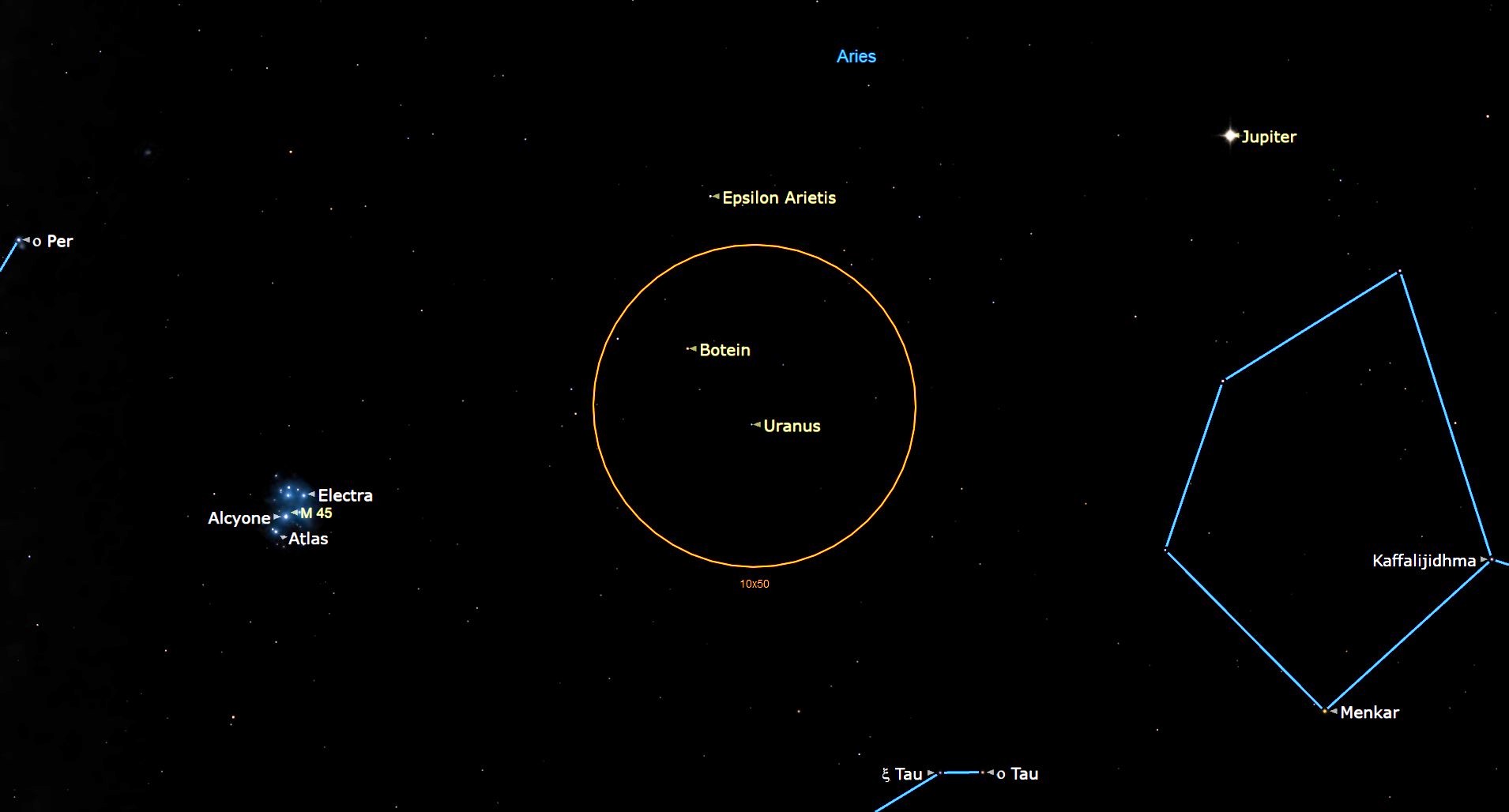
Uranus will be opposite the sun on Monday (Nov. 13), making the ice giant easier to see than usual. Skywatchers will get a helping hand to spot Uranus from the New Moon, which will appear absent from the night sky, thus providing dark conditions.
When planets lie opposite the sun, as Uranus will be on Monday, they are described as being "at opposition." Planets at opposition rise with the setting sun and set when the sun rises. When Uranus is at opposition, it will also make its closest approach to Earth, making it appear its brightest.
The distant ice giant will become visible from New York City at around 18:29 EST (2329 GMT) when it rises to 21 degrees over the Eastern horizon, according to In the Sky.
Related: Night sky, November 2023: What you can see tonight [maps]
Uranus will reach its highest point in the sky — 66 degrees over the southern horizon — at around 23:37 EST (0437 GMT) before sinking to below 21 degrees over the western horizon at 04:44 EST (0944 GMT) and disappear from view.
During its opposition on Monday, the seventh planet from the sun will be seen in the constellation of Aries, have a right ascension of 03h13m30s, a declination of 17°37'N and Ie a visual magnitude of 5.6.
The moon will be in its completely dark New Moon phase meanwhile, marking the beginning of a new lunar cycle. This means the moon will rise around the same time as the sun on Monday — at around 06:55 EST (1155 GMT). The New Moon will also set with the sun at around 16:38 EST (2138 GMT), which means it will be well out of the way as skywatchers start hunting Uranus.
Even with helpful dark skies, Uranus will appear as little more than a point of light over Earth during this close approach. After all, it is still 1.7 billion miles (2.7 billion kilometers) from our planet. But skywatchers should be able to see Uranus in some detail with a telescope. If you are hoping to catch a look at Uranus, our guides to the best telescopes and binoculars are a great place to start.
If you’re looking to snap photos of the night sky in general, check out our guide on how to photograph meteor showers, as well as our best cameras for astrophotography and best lenses for astrophotography.
Editor’s Note: If you snap an image of Uranus and would like to share it with Space.com’s readers, send your photo(s), comments, and your name and location to spacephotos@space.com.







